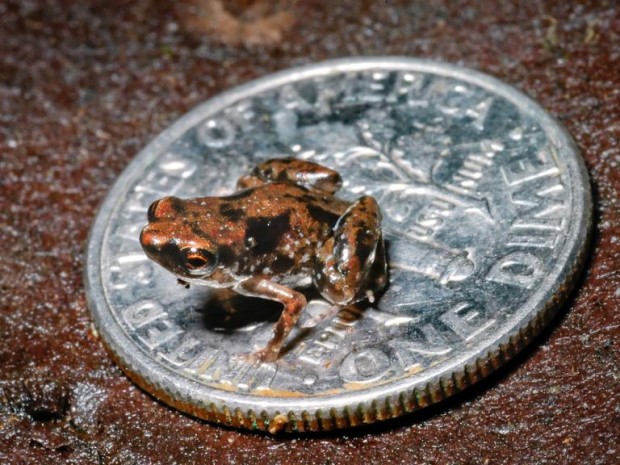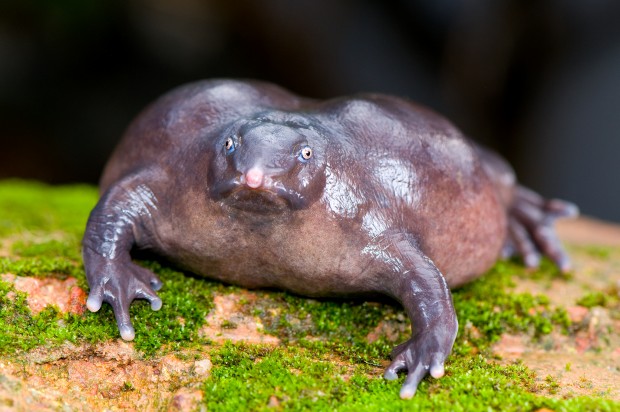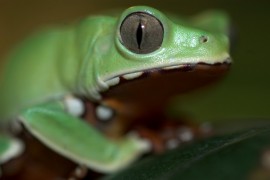Extreme Amphibians
Written by Tyler Parker
Amphibians are an extreme and versatile group of animals. They come in three main body types yet they exhibit some extreme variation in size, shape, and function.
Size:
The largest frog or toad in the world is the Goliath frog (Conraua goliath) native to West Africa. This frog measures in at 12.6 inches and weighs up to 7.17lbs. The Goliath frog is followed in sized by the Cane Toad (Rhinella marina) and African Bullfrog (Pyxicephalus adspersus). Yet the world’s biggest amphibian title is held by the Chinese Giant Salamander (Andrias davidianus). This behemoth comes in at a whopping 5.9ft long and weighs in at a hefty 110 lbs. Though its size may be impressive, it has made it a target in its native China as a popular luxury food item and its use in Traditional Chinese Medicine (TCM). The world’s smallest amphibian Paedophryne amauensis (no common name given yet) from Papua New Guinea, also holds the title of the world’s smallest vertebrate. Measuring in at an incredibly small 0.30 inches it beat out the current record holder, a fish from Indonesia by 0.0079 inches. This amazing amphibian can fit very comfortably inside the diameter of a dime.

Shape:
Amphibians come in many extreme shapes, all of which help them to survive in their natural habitat. The most unknown group of amphibians has to be the caecilians; in appearance they look like scale less snakes or large segmented worms. This is augmented by the fact that most subterranean caecilians, have no or small vestigial eyes and weird tube like tentacles that come out of their nose. Caecilians aren’t the only amphibians that look extreme though, take the Indian purple frog (Nasikabatrachus sahyadrensis). This frog is again almost completely subterranean; it even eats underground, yet when the monsoons come to the Western Ghats of India these frogs surface to call and mate in the fast moving rivers and streams that are formed from the rains.

Function:

Though size and shape are an extreme in which we categorize amphibians, others in this order are equally extreme in the way in which they behave and survive in their natural habitats while dealing with extreme conditions. Spadefoot toads cocoon under the ground in the deserts until the rains return and it is incredible that amphibians survive up north where it is cold almost 6 months out of the year. How do they do it? The North American wood frog (Lithobates sylvaticus) handles this situation by allowing itself to freeze solid by protecting its blood and vital organs with anti-freezing peptides produced by it and from the prey it eats. The same is true of frogs that are exposed to extreme heat yet have no means to escape it by burrowing. The giant waxy monkey tree frogs (Phyllomedusa bicolor) are able to produce their own natural sunscreen and wipe it all over their bodies to prevent drying out through desiccation. Finally what’s more extreme than an animal that doesn’t breathe on land using lungs? There is a whole family of salamanders called Plethodontidae that don’t have any lungs at all. They breathe through their skin exclusively and are one of the largest families of salamanders in the world. The most amazing thing is most of these salamanders are located here in the United States.
It’s extremely incredible how diverse amphibians are.
